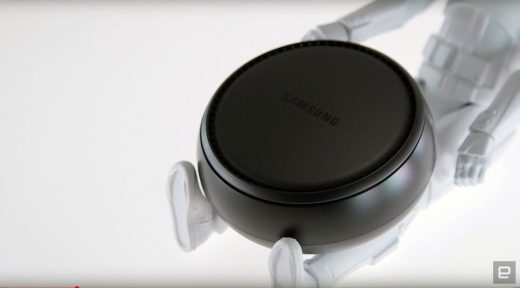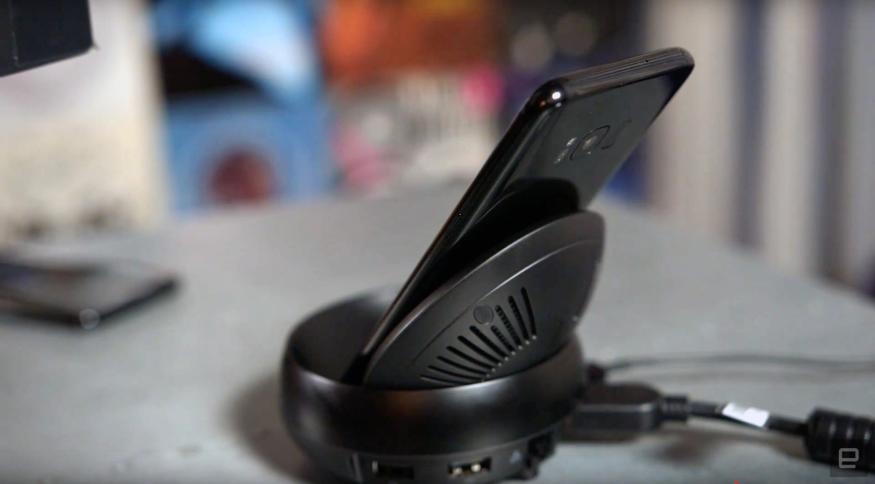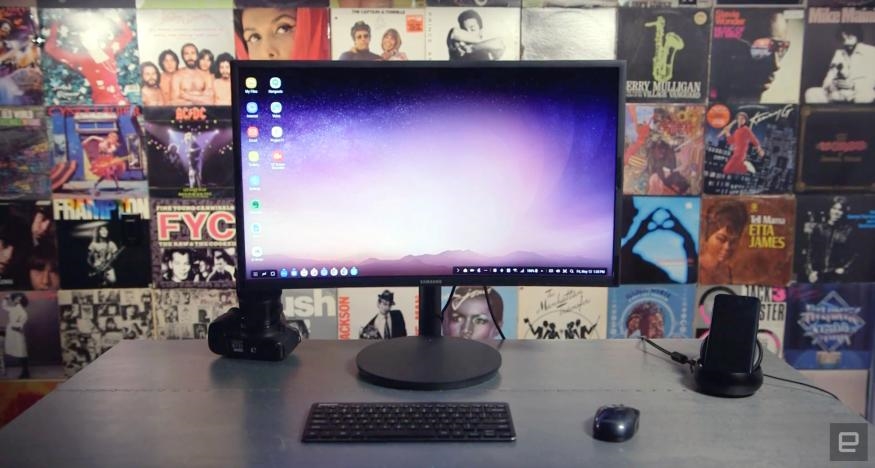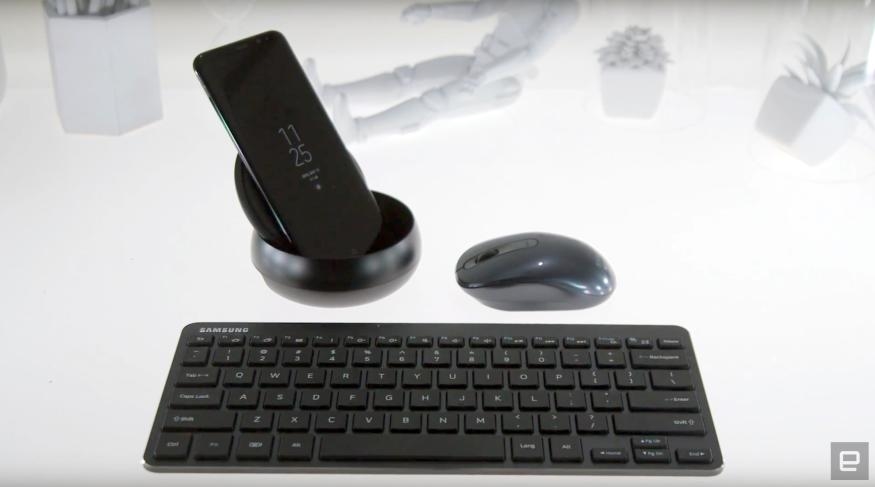Samsung Smart Monitors are up to 25 percent off right now
My family’s first computer was a boxy, squat Tatung with an AMD K2, a handful of RAM and a 4GB hard drive. It was ugly and slow, even by 1998 standards, but it (somehow) got the job done. The decade and change that followed brought staggering leaps in performance and huge reductions in size. I’m writing this on a Galaxy S8 Plus — a metal-and-glass slab I just pulled out of my pocket — connected to a monitor, keyboard and mouse with Samsung’s new DeX dock. The kicker: It’s far better than I dared expect. Ten-year-old me would be losing it if he saw this. In fact, the me from three or four years ago would’ve done the same. After all, this isn’t a new idea.
Companies have tried — and mostly failed — to make smartphones work like PCs for years now. Just look at Motorola’s Atrix or Microsoft’s Continuum or any of the startups languishing on Kickstarter. And yet, here we are — the Galaxy S8 doubles as a surprisingly respectable PC. The real question now isn’t about how feasible the idea is, it’s whether anyone should bother. Unfortunately, as impressive as DeX can be, the answer for most people is a big ol’ “no.”
Samsung DeX
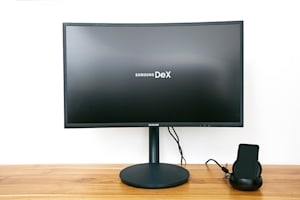
Pros
- Turns the S8 into a surprisingly decent PC
- Familiar desktop interface
- Dead-simple setup
Cons
- No headphone jack
- Not all apps work correctly in DeX
- Required components could cost extra
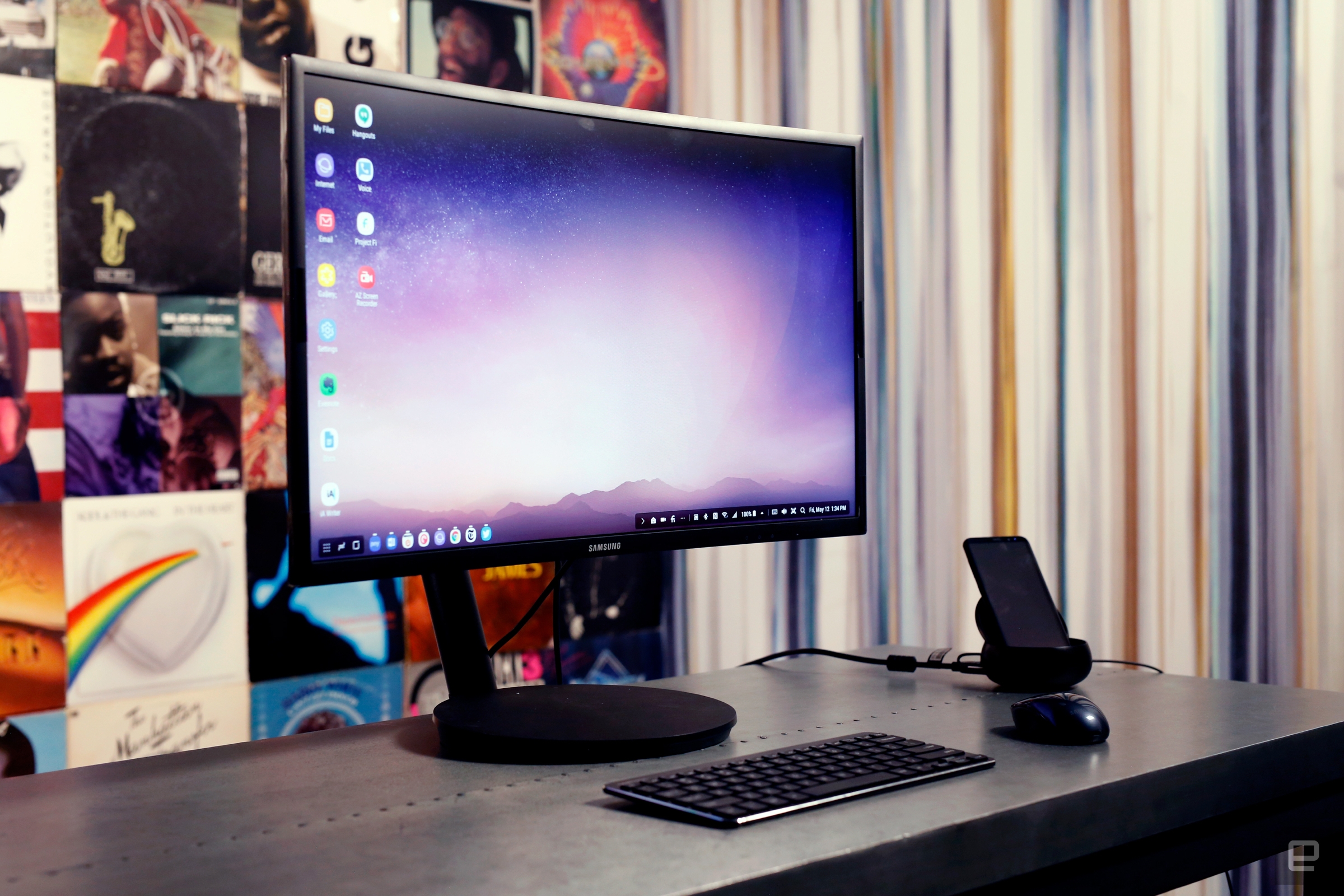
Chris Velazco/Engadget
Getting started
If you want to turn the S8 or S8 Plus into a PC, you’re going to need a bunch of extra parts. There’s the DeX dock ($150) to start, which has most of the requisite connections — an HDMI-out port, an ethernet jack and two full-size USB ports. You can connect a wired keyboard and mouse, but the more elegant solution is to use a pair of Bluetooth ones. Just remember to pair them before you dock — otherwise you’ll be stuck with a pretty desktop and no way to use it.
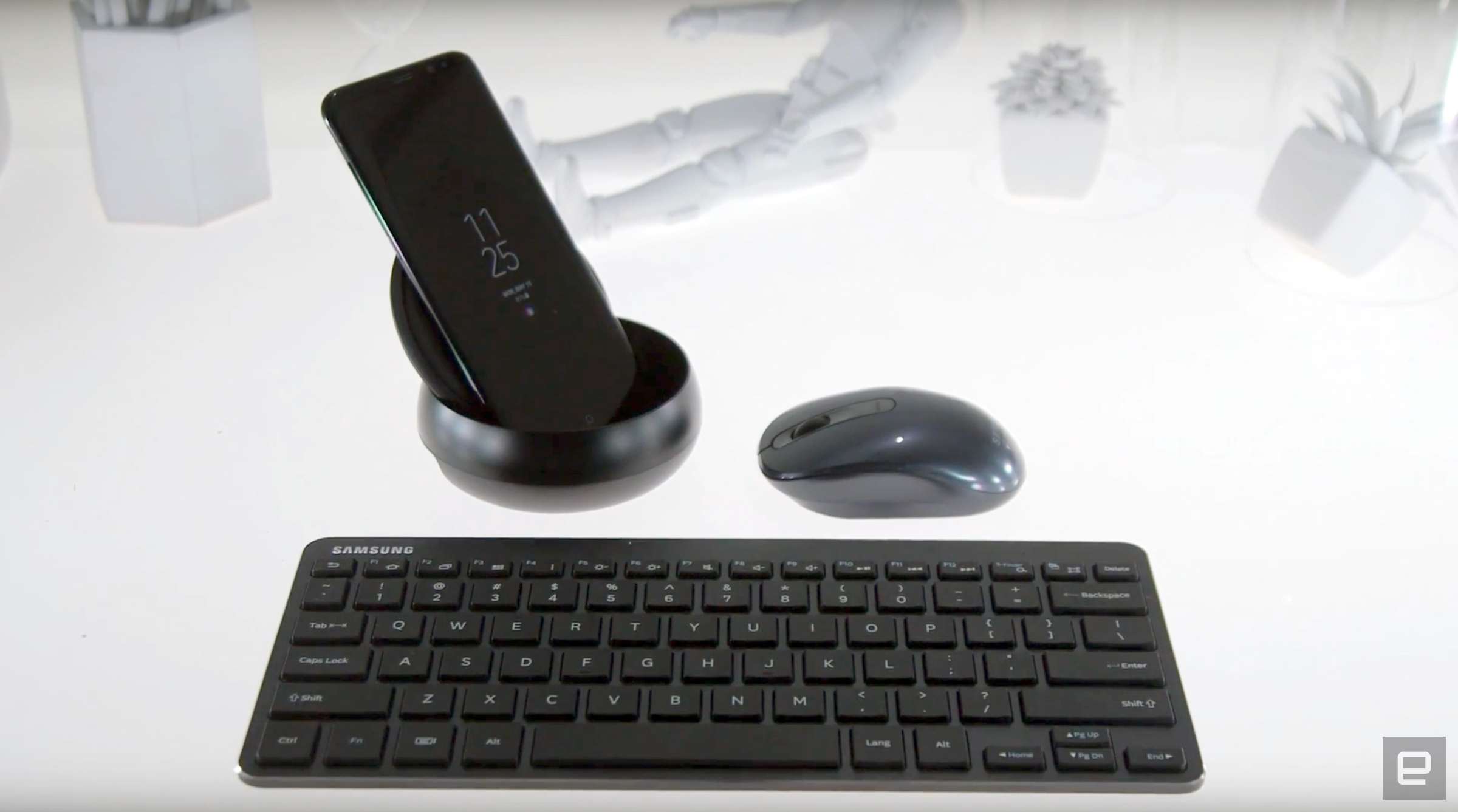
For most, the biggest omission is a headphone jack, because the phone’s speaker is blocked when docked. Audio is routed through the S8’s speaker by default, which gets the job done, but anyone planning to spend a lot of time in front of a DeX desktop will want something better. Here’s hoping the monitor you connect to the DeX dock has built-in speakers or a headphone jack of its own. (You could also link up a Bluetooth speaker if you have one of those handy.) And while we’re talking about monitors, there’s a decent chance the spare displays in your home use VGA or DVI connections. If that’s the case, you’ll need an HDMI adapter to connect the screen to your dock — yet another thing you might have to buy.
Some of you reading this will have all this stuff lying around the house anyway. In that case, go nuts: Getting everything set up takes moments, at most. If, however, you have to go out and buy all the extra peripherals, a little mental math is in order. Do these extra costs seem worth it when you probably have a full-blown computer within reach?
In use
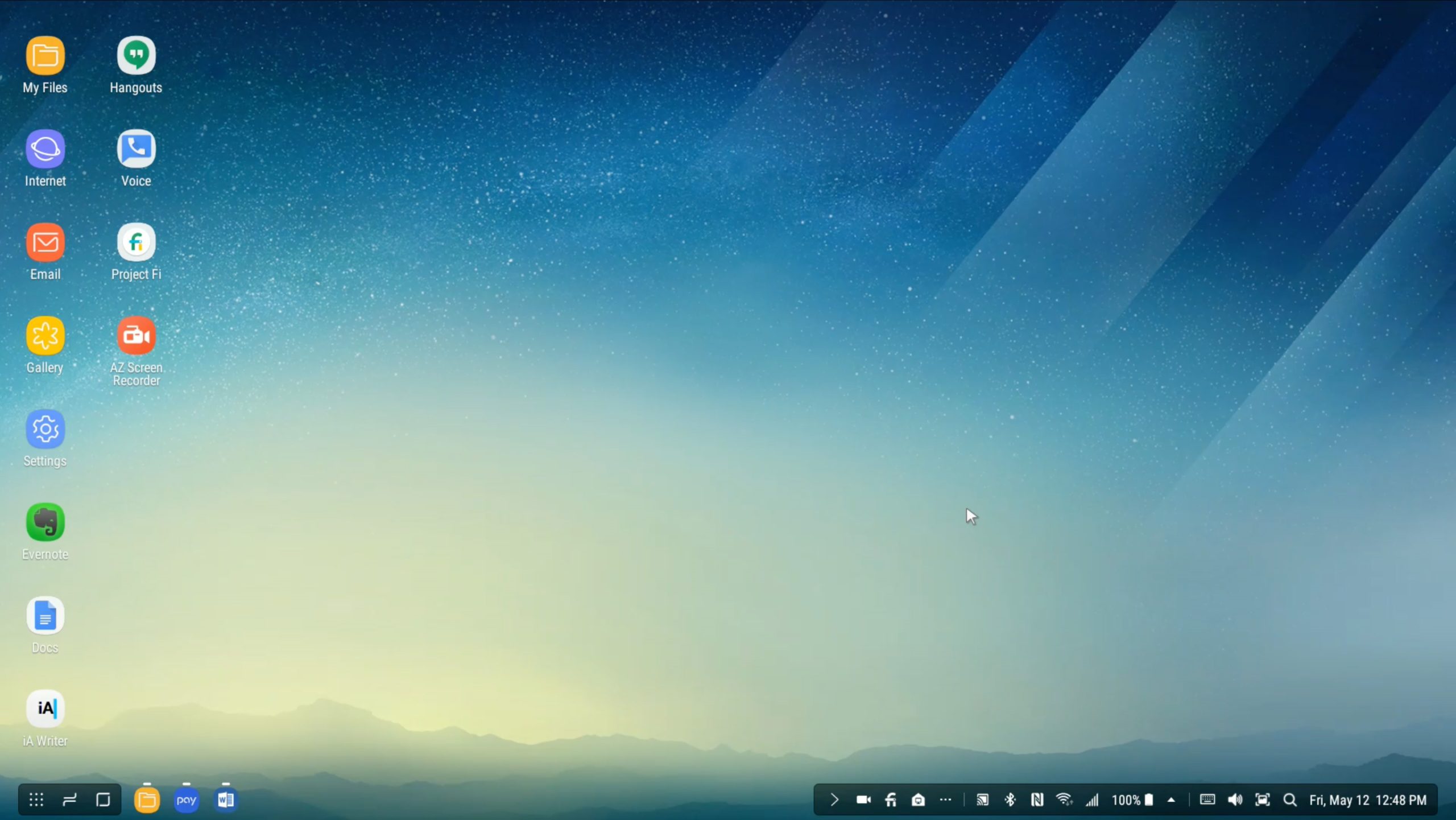
Chris Velazco/Engadget
Now we’re getting to the good stuff. Once everything is plugged in, you’re dropped onto a very familiarlooking desktop — the app launcher-button lives in the bottom-left corner like the classic Windows start button, and the time and quick-settings panel are locked on the bottom-right. If you’ve fiddled with Windows at all since 1995, everything will make sense.
To really get a feel for what the S8s are capable of with DeX, I spent the past week trying my best to use this setup as my daily work rig. I’ve been firing off emails, opening loads of browser tabs, skimming through videos, and generally trying to be productive. There’s a surprising amount of power locked away inside the Galaxy S8, making DeX snappier than I expected. For the most part, DeX has kept up with everything I’ve thrown at it, and everything moves smoothly even when the system inevitably tells you it’s running low on memory. It’s not as quick as the PC you probably already have, but it was more than enough for most of my daily routine.
Gallery: Samsung DeX review
Most of the time, I had Slack and Chrome taking up my screen space, with Evernote, Google Docs, Pocket Casts, The New York Times app, Twitter and more in idle windows in the background. None of these posed problems. DeX even handled some arcane corporate tasks, like filing expense reports. I was able to dig up a receipt from my inbox, download it onto the phone, and import it into our expenses system with a little help from a third-party file-manager app. Consider me (mostly) impressed. Gamers obviously need not apply, but if you spend most of your day within the confines of a web browser, DeX may suffice.
Even so, there were occasional moments when the interface refused to respond at all, prompting minutes of frustration and pointlessly clicking on things. And often the system started working normally again just as abruptly as it stopped. Confusingly, I had maybe 10 apps going (far short of the 30 Samsung set as a cap) when it would freeze up. These instances are relatively rare, but they’re a jarring reminder that the S8s were meant to work as a phone first and a desktop second. And really, that’s the most important thing to keep in mind about DeX. Samsung has shoehorned a perfectly usable desktop interface into the S8s, but they often still try to act like phones.
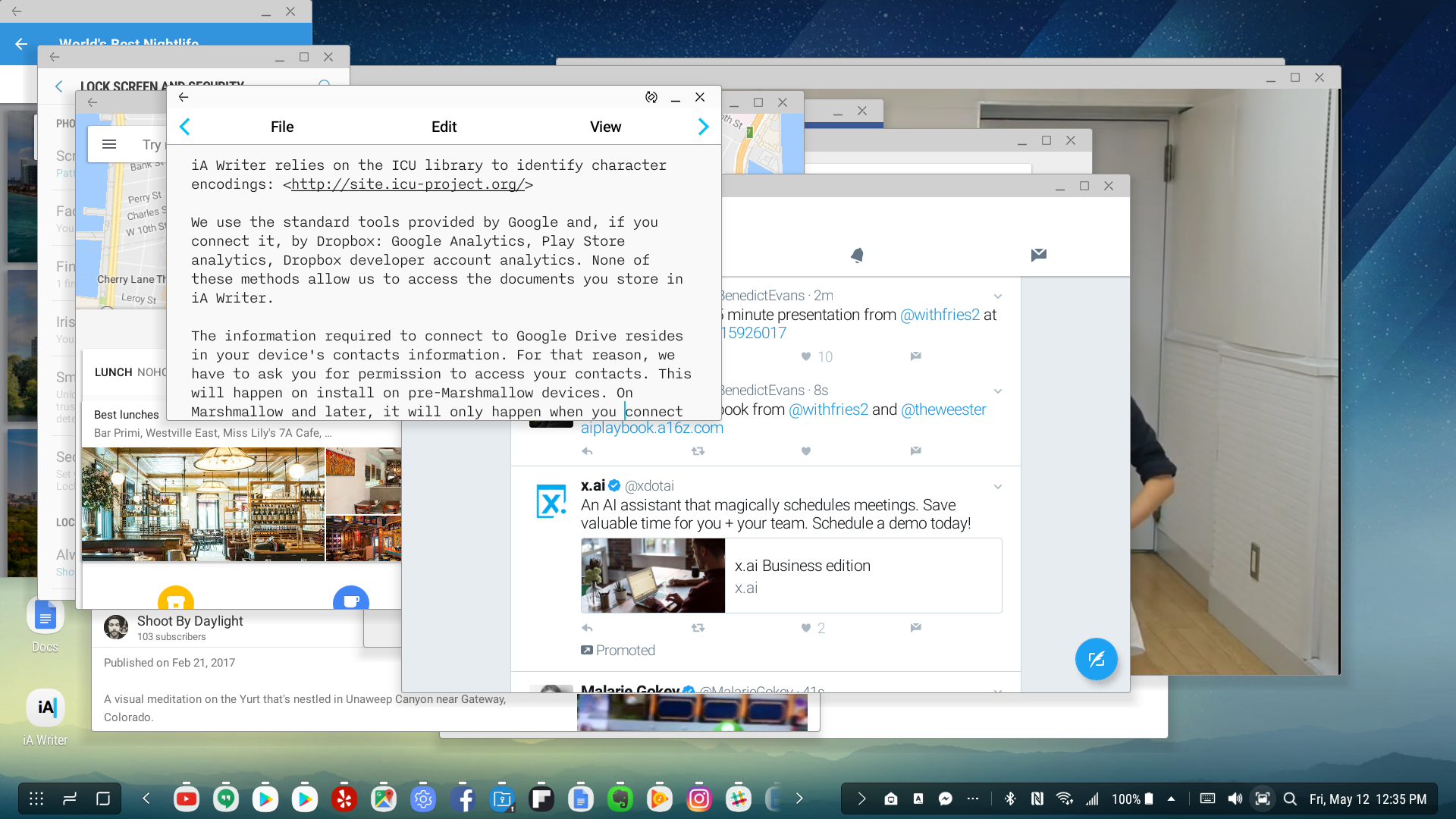
Chris Velazco/Engadget
Just look at how DeX handles your installed software. Some apps, like Microsoft Word and Excel, have been optimized for DeX and deliver the smoothest “mobile” productivity experience I’ve seen. At the time of this writing, there are 16 optimized apps in Samsung’s store, some of which are more helpful than others. The Office apps are a no-brainer, as are Skype, Wunderlist and Photo Editor MG, but who’s aching for Craigslist+? Some of you will also love Amazon Workspaces, which lets you spin up a virtual Windows or Linux machine when Android is too constricting. With a solid network connection, Workspaces is excellent when windowed or running full-screen. You’ll need passing familiarity with Amazon Web Services to get started, which can be tricky for non-power users. Then again, if you’re a power user, you’re probably not spending that much time on a DeX rig anyway.
Other apps, like Twitter, can be resized into tablet-like forms. But they don’t feel any better on a desktop monitor than they do on a tablet — and app optimization for Android tablets is pretty terrible. The last category is the biggest: These are the apps that run solely in small, phone-sized windows. Facebook and Instagram fall into this pile, which, honestly, isn’t so bad, because I could just open them up in a web browser and be on my merry way. Unfortunately, your choice of browser will have a pretty big impact on the quality of your DeX experience. Samsung’s, for instance, defaults to showing you full desktop versions of websites instead of their (usually lackluster) mobile equivalents. Chrome — my go-to — doesn’t. It serves up mobile versions of sites, despite Samsung reps telling us this wouldn’t be the case. Sure, you can force Chrome to request desktop pages, but that has to happen on a site-by-site basis, which is a waste of time.
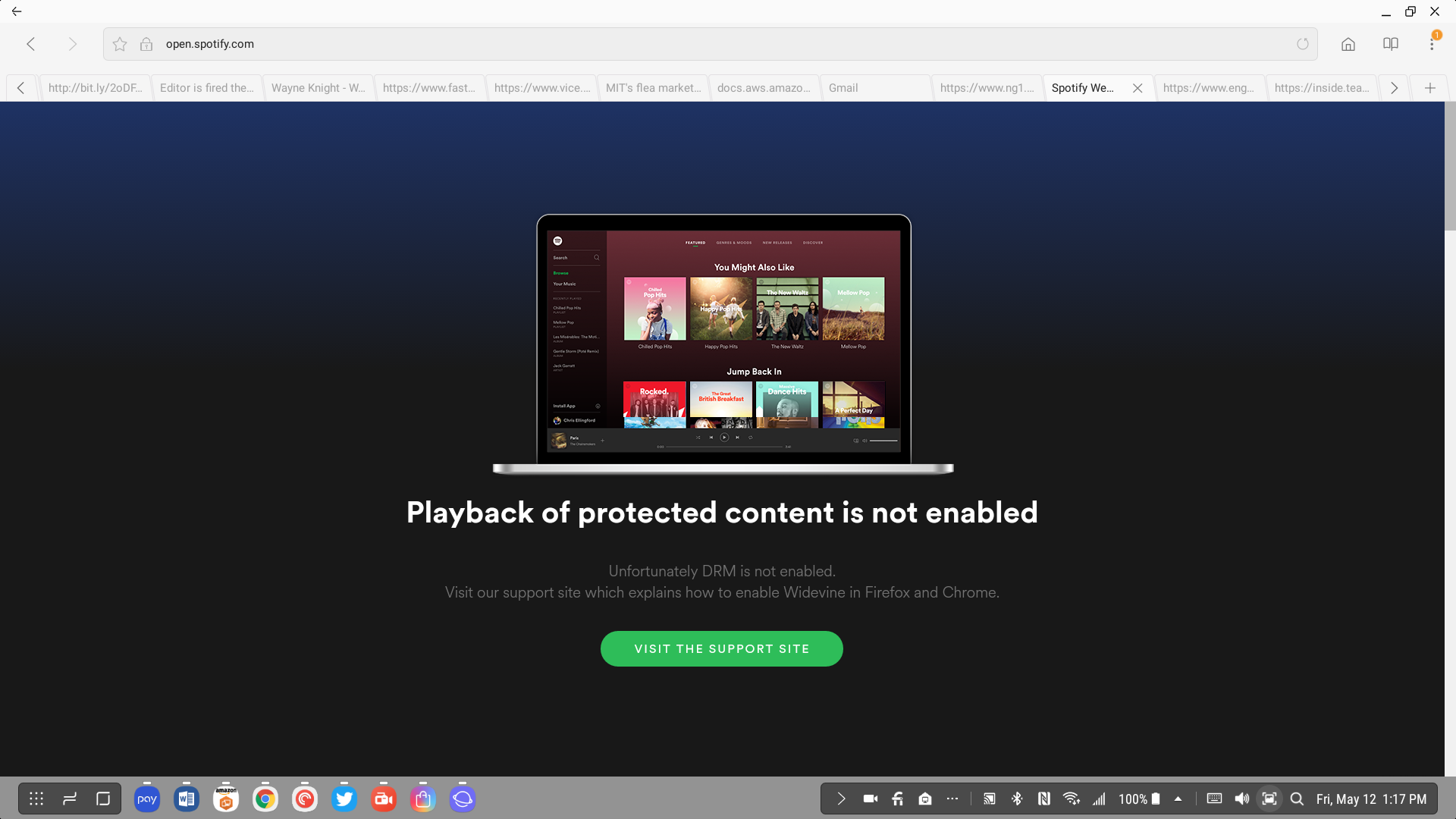
Chris Velazco/Engadget
Still other apps refuse to run under DeX at all. Some are obvious, like Samsung Pay — after all, there’s no reason to worry about mobile payments when your phone is plugged into a dock. Others, like Spotify, are much more frustrating. And let me be 100 percent clear: It’s not that Spotify won’t run in a resizable window; it refuses to run altogether, even the web player. The only way I could access my Spotify library was to fire up a virtual Windows machine (thanks, Amazon) on which I could install and run the desktop Spotify app. (Thankfully, other media apps, like Google Play Music, work just fine.)
And then there are the little things. Certain web apps, like Evernote, won’t work in browsers, so you’re forced to download the app. The phones don’t keep track of the way you like your windows organized, so you’re starting from scratch each time you dock. Sometimes the Samsung Pay tab appears at the bottom of the main display, which is, well, useless. Copying and pasting between apps can be tricky, if not impossible, because they don’t all work well with mouse cursors. And unlike Microsoft’s Continuum, which keeps the Windows Phone’s screen active while docked, the S8 stays mostly inert. You can use the built-in iris scanner to authenticate yourself when DeX is locked. But “can” doesn’t always equal “should.” I had to hunch over my desk and move my face for a few moments to find the sweet spot. Trust me: You’re definitely better off punching in your PIN.
Wrap-up
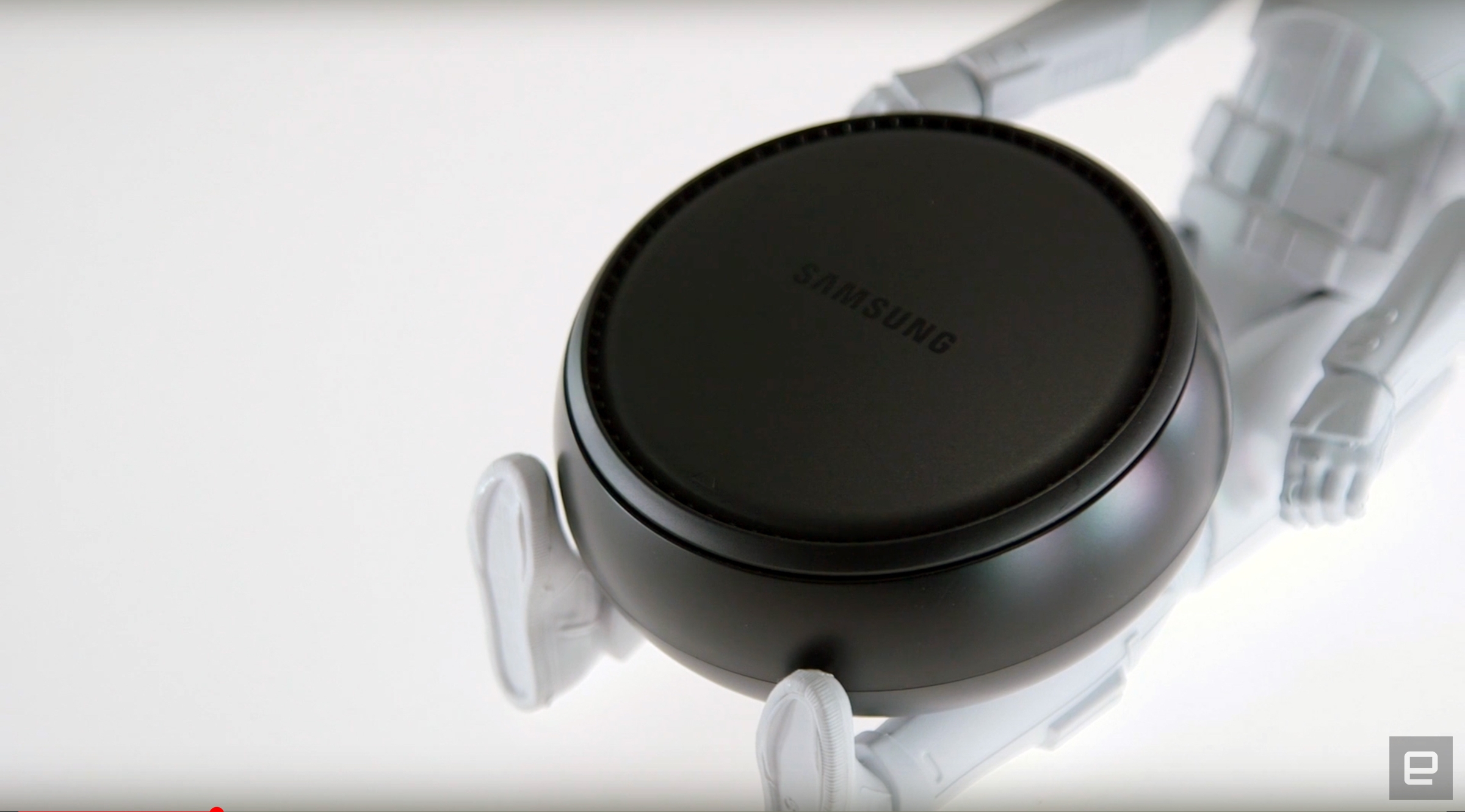
DeX has issues, but as a whole, it works well enough that some little problems can be overlooked. There’s no way to turn a phone into a computer without a lot of help from software partners and app developers, and despite some flawed execution, DeX blurs the line between phone and PC better than anything else in smartphone history. It’s a hell of a technical achievement.
That doesn’t mean you should rush out and buy a DeX dock, though. On some level, it feels like something Samsung built just to prove that it could. Because of that, it can be difficult to imagine how something like this meaningfully slots into someone’s life. If you can afford a pricey smartphone, you almost certainly have a PC or two around the house already. You could feasibly use it as a computer for kids, but if they’re old enough to be responsible for an expensive device, they probably already have access to a computer. Most important, the technical restraints here and the need for extra gear ultimately make DeX a hard sell.
(16)

